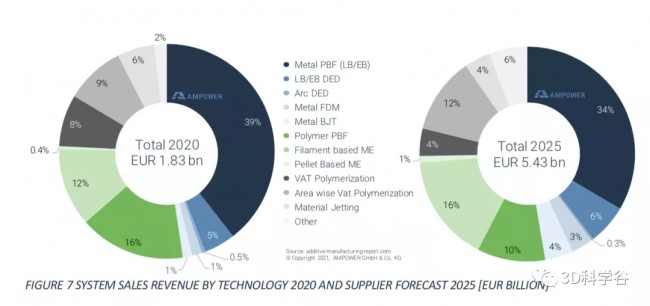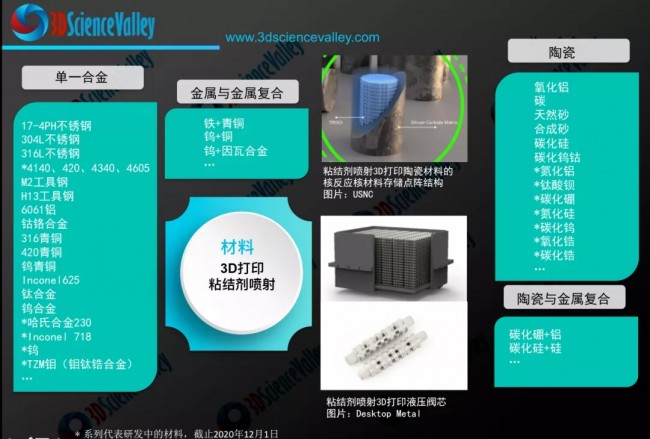British technology company Evove has signed a joint development agreement with Meta Additive, part of Desktop Metal, for an advanced additive manufacturing production solution for 3D printing Separonic ceramic membranes. Part of the development plan for Evove’s Separonics product line (precision engineered 3D printed ceramic membranes) was the creation of a blueprint to support global rollout and the establishment of regional manufacturing centers.
New technologies give birth to new possibilities
To mature the field of ceramic additive manufacturing, ceramic research and development should focus on expanding material choices, improving3D printingand post-processing control, as well as unique capabilities such as multi-material and hybrid processing.
ceramics3D printingTechnical classification and brand
![]() Advanced binders for complex products
Advanced binders for complex products
According to Evove CEO Chris Wyres, the signing of this partnership agreement with UK-based Meta Additive is a major milestone in the commercialization of Evove’s Separonics product line, which is powered by scalable Meta Additive’s proprietary binder jetting and material technology And cost-effective manufacturing capabilities, Evove’s Separonics product line is used for the filtration, isolation and extraction of gases, liquids, suspended solids, and even microorganisms, via binder jetting3D printing technologyManufacturing Separonics ceramic membrane products provide ceramic membranes with improved performance and enhanced utility at significantly reduced cost.
It is understood that the base material of ceramics may be fired at nearly 2000 degrees through traditional manufacturing processes, and such a high temperature will naturally bring about various challenges in sintering. And in order to improve the flow rate of liquid/gas, the product design should be as thin as possible. If the pores cannot be controlled microscopically, these will affect the performance of the ceramic membrane.
Evove’s new ceramic membrane products manufactured by binder jet 3D printing use CFD (Computational Fluid Dynamics) and AI to design microscopic pore structures and distributions that can be precisely controlled, and may be designed and manufactured differently depending on the use scenario of the product so as to achieve the optimal performance of product filtration isolation and extraction.
According to 3D Science Valley, Meta Additive has become a part of Desktop Metal. In the first three quarters of 2021, Desktop Metal has locked up important assets. Desktop Metal has three-pronged approaches in key areas: first, it can provide a combination of speed. The second is to vertically integrate consumables for Desktop Metal printers to enhance high-margin recurring revenue streams for high-performance parts manufacturing client. The third is applications that advance new typical market applications, aiming to drive mass adoption of 3D printing.
Managing and compensating for the massive shrinkage that occurs during the sintering phase is Binder JettingMetal 3D PrintingOne of the biggest challenges facing technology. Parts shrink 30-40% in the furnace and 15-20% linearly. Shrinkage is predictable if the part is small and has a uniform wall thickness. However, the sintering process of large components of different thicknesses can create very complex geometry problems.According to 3D Science Valley market research, sintering shrinkage currently severely limits Binder JettingMetal 3D PrintingThe geometry and type of application for which the technology is applicable.
Meta Additive’s non-sacrificial binder solution reduces sintering shrinkage from 20% to 2%, not only eliminating the need for a debinding step, but also reducing the level of heat required in the post-processing stage. After normal printing, heat treatment at 300°C can be done. The heat treatment is to consolidate and optimize some microstructures. It is reported that the adhesive of Meta Additive is mainly a chemical reaction, not only a physical reaction during the use process. This is the research and development of chemical technology based on the technological tree and related industrial achievements of atomic layer deposition (ALD) and chemical vapor deposition (CVD) invented in the 1970s. This binder is composed of molecular components, nano-components and micro-components. The nanoparticles are filled in the powder gap to achieve inter-particle bonding and penetration, which is equivalent to depositing the binder on the metal powder uniformly and non-porously during the 3D printing process. between the bed particles.
According to Meta Additive CEO Simon Scott, leveraging Meta Additive’s binder jetting technology and new functional binders to deliver advanced additive manufacturing solutions will allow Evove to eliminate problems associated with traditional ceramic manufacturing techniques, including shrinkage , energy-intensive heat treatment and slow production rates.
Meta Additive’s solution has clear advantages in the production of ceramic membranes, especially in harsh environments with high temperatures and acidic fluids. 3D printing Separonics ceramic membranes with Meta Additive means that Evove can effectively eliminate the challenges associated with traditional ceramic manufacturing processes, High cost and carbon footprint. Additionally, 3D printing enables Evove to produce novel precision-engineered architectures that optimize membrane hydrodynamics and integrity, delivering truly game-changing performance, reducing energy consumption for filtration and separation, and extending membrane life.
Evove aims to have the first full-scale manufacturing process in place in the North West of England by the end of 2022 to facilitate industrial testing of ceramic Separonics at customer sites shortly thereafter.
![]() Binder Spray Metal3D printing technologyAccelerated development
Binder Spray Metal3D printing technologyAccelerated development
In the field of metal 3D printing, indirect metal 3D printing represented by Binder Jetting-binder jet metal 3D printing technology has attracted great attention from the industry with its high speed and low cost.
According to AMPOWER, a global market research partner at 3D Science Valley, by 2025, AMPOWER expects a decrease in the market share of powder bed systems, such as binder jetting in metal (BJT), to accelerate its rise.
 ▲ Different types of metal 3D printing technology market share (2020, 2025 – forecast)
▲ Different types of metal 3D printing technology market share (2020, 2025 – forecast)
© AMPower
Binder jet metal 3D printing technology fully satisfies mass production-oriented applications from the perspective of production efficiency and economy.
 ▲ Binder spray3D printing materials
▲ Binder spray3D printing materials
(responsible editor: admin)





0 Comments for “Eliminates problems associated with traditional ceramic manufacturing techniques, a milestone in the commercialization of Evove ceramic membrane additive manufacturing”